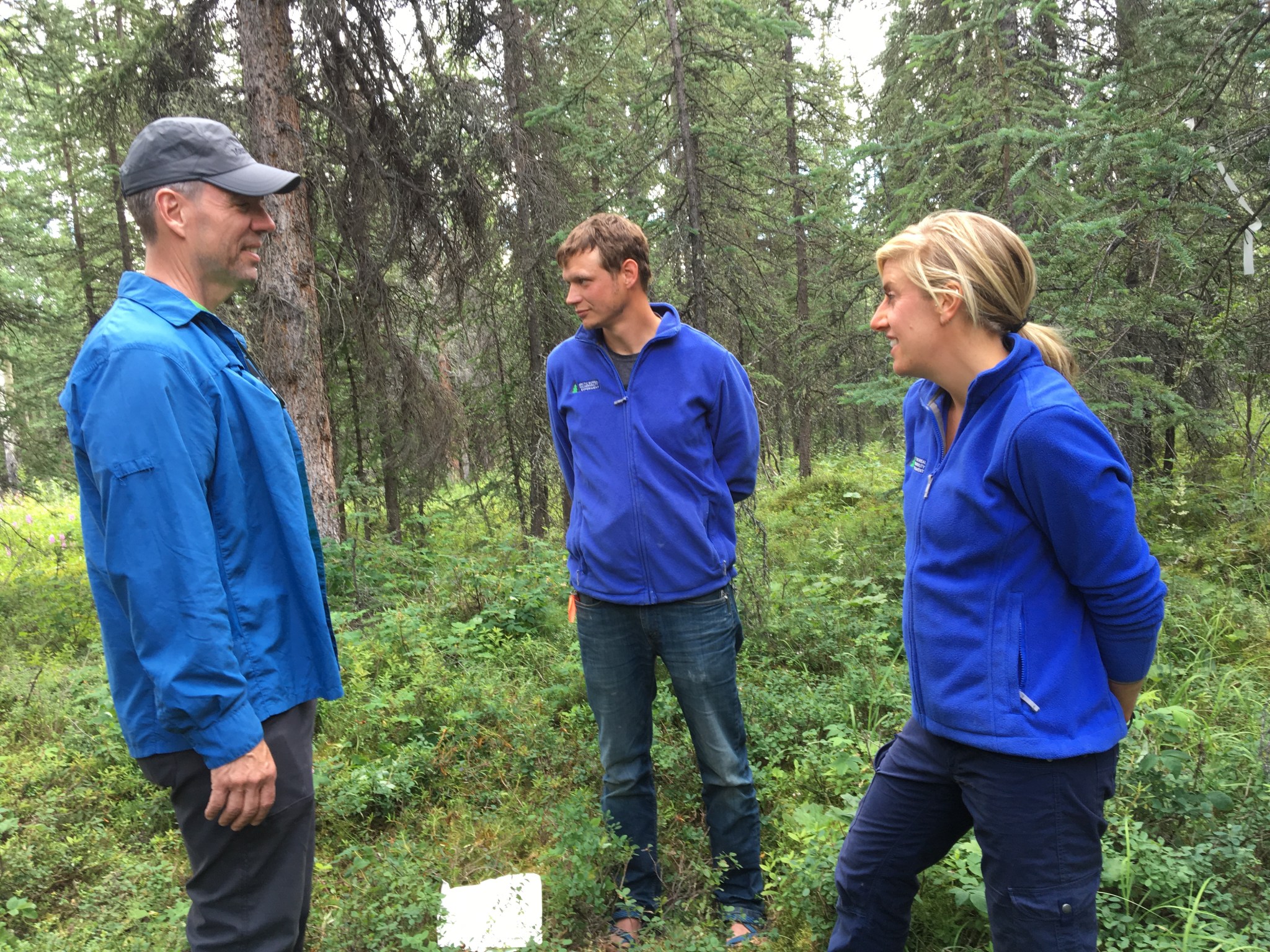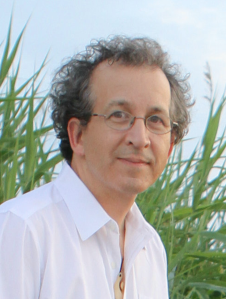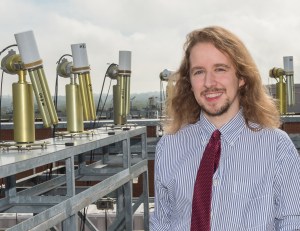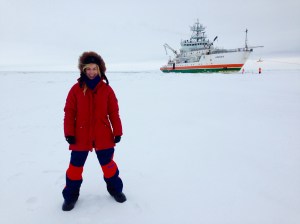Dr. Peter Griffith serves as the director of NASA’s Carbon Cycle and Ecosystems Office at NASA’s Goddard Space Flight Center. Dr. Griffith's scientific journey began by swimming in lakes as a child, then to scuba diving with the Smithsonian Institution, and now he studies Earth’s changing climate with NASA.
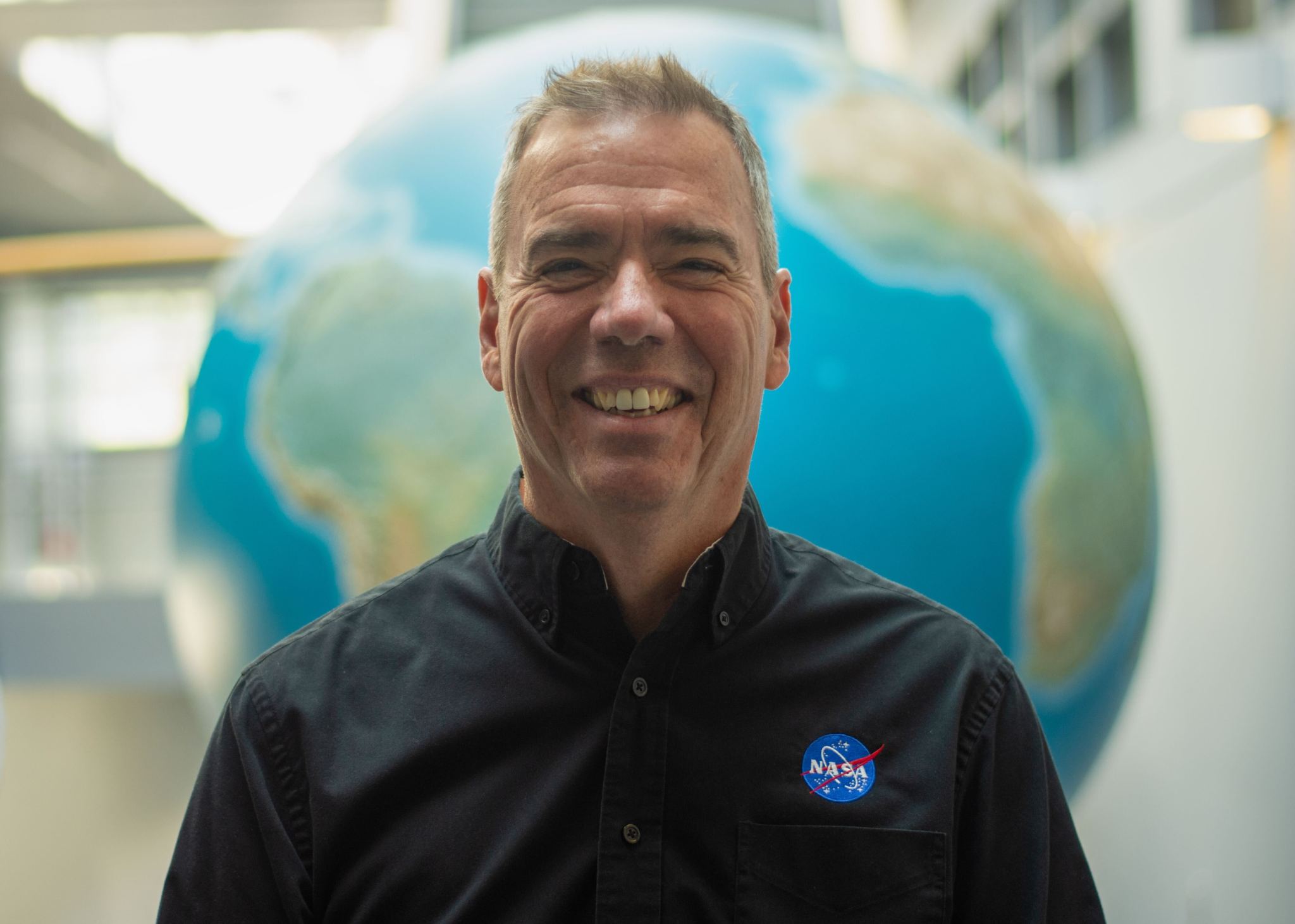
Name: Peter Griffith
Title: Director, NASA Carbon Cycle and Ecosystems Office
Organization: Biospheric Sciences Laboratory, Code 618
What’s your official role at Goddard?
I lead NASA’s Carbon Cycle and Ecosystems Office, which is in the Biospheric Sciences Laboratory at Goddard. We answer to NASA Headquarters, we support the Carbon Cycle and Ecosystems Focus area, and we support different elements of the funded program that comes out of that. To a great extent, we support the terrestrial ecology program, but also ocean biology and biogeochemistry, biodiversity, the Carbon Monitoring System, and some application work.
A lot of our work consists of supporting field campaigns. These are activities where dozens and sometimes hundreds of investigators go out into amazing parts of the world and do the work on the ground – or on the water – to have an up-close view of what’s happening in critical parts of the planet and couple that fine-scale information with observations from remote sensing instruments on aircraft and ultimately on satellites.
What do you do on a day-to-day basis?
One of the really fun things I get to do is coordinate with our teams that are out in the field and the flight crews. We’ve got an aircraft, a relatively small twin-engine turboprop that’s flown in Alaska with an instrument called AVIRIS, a very fancy camera that sees lots of colors and makes images from it that have far more wavelengths than what your cell phone camera has in it. It’s called an imaging spectrometer. We fly that to look at vegetation characteristics and methane emissions across Alaska and some parts of Canada.
A couple months ago, I got to go up and spend some time in Fairbanks working with the instrument crew from NASA’s Jet Propulsion Laboratory in Southern California and the flight crew and fine-tune when and where we would fly each day. I don’t do lab work or very much field work at this point, so an awful lot of it is coordination with scientists and engineers to help us go to the right places and measure the right things.
How did your path to Goddard start?
I was a kid growing up in the in the Apollo program era, and I lived in my parents’ house on a lake in Central Florida about 50 miles from Cape Canaveral. A lot of my childhood consisted of catching alligators in the lake and watching Saturn V rockets take off. It was very exciting.
Because I was a giant nerd with big, thick glasses, being an astronaut was completely off the table, I knew that. But that whole thing about swimming in the lake took me in, ultimately, into being a scuba diver and going into marine biology. As a scientist, I started off in the water and then gradually moved to on top of the water, and then, ultimately went up into the air and into space, at least with the instrument eyes that we have on the world. In some respects, I was a carbon cycle scientist since before it was cool.
Do you have any cool stories from the field?
Oh, boy. We have several 100 investigators that have been funded over the years and probably 100 or more who are involved in one way or another, and I probably credit a lot of them for having the coolest stories, But in my own role, I’ve had conversations and consultations with federal and state and local folks in Alaska and Canada about where and when we fly our airborne instruments, so in the course of that, I’ve had the chance to talk with representatives from First Nations about what their concerns are. It’s been really interesting for me, very broadening of my knowledge from my narrow view as a scientist. We like to think we know a lot of things, but in talking with many of our Indigenous partners, I continue to learn that there are a lot of things that we don’t know, and that I don’t know.
One of the great things about this job is getting to learn new things all the time. Sometimes it’s about new satellites or new ways of using different kinds of radar and lidar to observe the planet. That is certainly a stimulating part of the job, but another really stimulating part of the job is getting to know people and getting to see their world and hear them explain how they see the world through their eyes.
Do you ever miss doing field work?
That’s a really good question. It’s a challenge because, there are a lot of sacrifices that you make as a field scientist. It may put you a very long way away from your family, for instance. One of the reasons, actually, that I moved into project management was that it gave me a better work-life balance at a time when I had small kids.
It’s been so fun working at Goddard Space Flight Center. There are still times when – and particularly after having to work remotely for a while – that I come on campus and see the great, big NASA emblem on the side of the High Bay Clean Room building and I go, “I can’t believe I get to work here.”
By Ananya Udaygiri
NASA’s Goddard Space Flight Center, Greenbelt, Md.
Media Contact:
NASA’s Goddard Space Flight Center, Greenbelt, Md.
Conversations With Goddard is a collection of Q&A profiles highlighting the breadth and depth of NASA’s Goddard Space Flight Center’s talented and diverse workforce. The Conversations have been published twice a month on average since May 2011. Read past editions on Goddard’s “Our People” webpage.



























